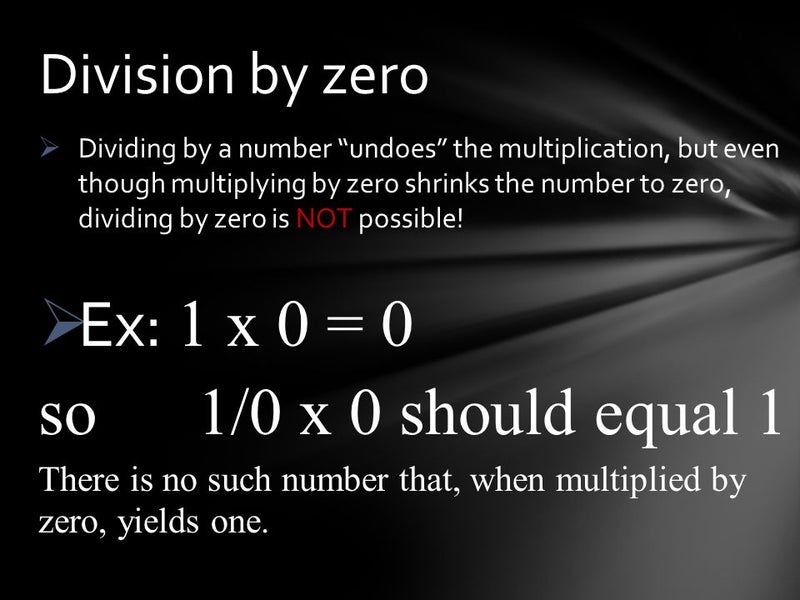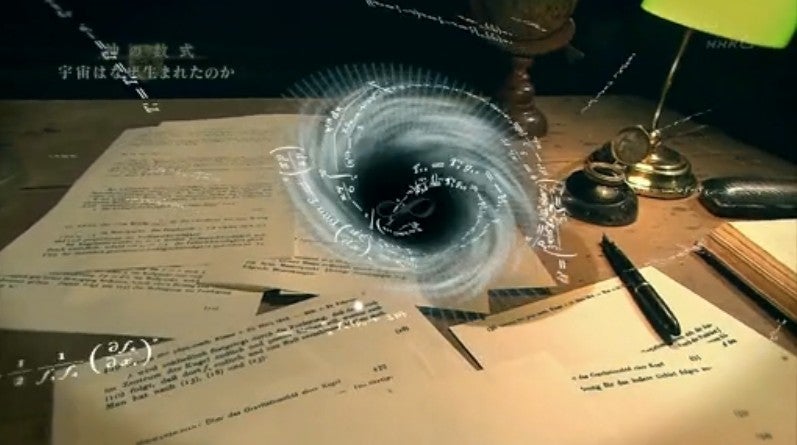Leonardo da Vinci — Renaissance man
Most people have at least a passing acquaintance with the name Leonardo da Vinci (1452-1519) and are probably also aware that he is the artist who created two of perhaps the most well-known paintings in the world — the “Mona Lisa” and the “Last Supper”. But many do not know that he was a man of a multitude of talents, including being an inventor of some incredibly advanced technology for his time. An exhibition currently up at the Pump House Steam Museum, titled “Leonardo da Vinci: Relentless Curiosity,” explores this lesser-known side of da Vinci and is a fun and interesting diversion for people of all ages.
Leonardo da Vinci was an extraordinary man living in an extraordinary time — the Renaissance, which ran from roughly the 14th century to the 16th century and had its peak in the latter half of the 15th century. The term Renaissance literally means “rebirth” in French (re-naissance), and it refers to a revival, or rebirth, of Classical (ancient Greek) themes in art and literature, and a return to the realistic depiction of nature through close observation. As well, the Renaissance saw the resurrection of the Greek philosophy of “humanism,” which elevated the importance of human dignity, ideas and capabilities. Humanism embraced the concept of Roman civic virtues and, in addition to an emphasis on reason and service to the state, humanism also recognized the importance of creative individuals and their role in contributing to the prestige of their homeland.
[For the record, the idea of the Renaissance itself reinforces the erroneous, Monty Pythonesque vision of the Middle Ages (the intervening period between the decline of the Roman Empire and the rise of the Renaissance) as the ignorant, plague-and-misery-ridden Dark Ages, by assuming the guise of the saviour of art and culture from the dark morass of ignorance. But it’s worth noting that Medieval Europe wasn’t a centuries-long vale of tears — it saw its own advances in learning, science, religion, arts and architecture, and set the stage for important changes in economy and government. But I digress.]
Da Vinci’s lifespan puts him squarely in the period known as the High Renaissance, during which the artistic stylistic principles and techniques developed in the Early Renaissance were refined (and before they tipped over into the late Renaissance and Mannerism). The period also gave rise to the concept of the “Renaissance man.” A Renaissance man is an extraordinarily talented person who excels in a wide range of activities, mental, physical and creative — and da Vinci typifies the expression (as does Michelangelo, his contemporary, but that’s another story). By all accounts, da Vinci, though personally rather indifferent to his fellow humans, was prodigiously talented and imaginative, with art being only one of his many interests. He was an engineer, musician, physical scientist, biologist, botanist, zoologist, anatomist, geologist, cartographer, inventor, architect and artist, among other things (though perhaps not a poet), and was considered quite good-looking for his time as well, just for good measure. You know, one of those people you might despise if only his accomplishments weren’t so astounding. Da Vinci reveals his relentless curiosity through thousands of pages of notes on an enormous range of subjects, liberally sprinkled with sketches and drawings. His life was not long enough to allow him to pursue even a fraction of his ideas, but he succeeded in mapping the route that art and science were to take for generations.
This is what the Pump House Steam Museum exhibition gives us a glimpse of, and also provides some hands-on exhibits so that you can test out some of da Vinci’s inventions for yourself (and see which ones worked and which ones didn’t). The exhibition also links some of his inventions to similar ideas produced in the present day. Da Vinci’s imagination seems limitless, encompassing human flight, submarine travel, feats of engineering, and of course beautiful art. Many of his drawings for these inventions are reproduced for the exhibition. Da Vinci was in some cases far ahead of his time and was, in fact, mostly limited only by the technology and materials of his own. A little research reveals that while some of his drawings and inventions couldn’t possibly have been built in the 15th century, they have successfully been executed in our own, and are quite esthetically pleasing as well. For da Vinci, art and science were intimately related, though they were not interchangeable. For him, science was an investigation of reality, while art was an expression of beauty. He used scientific observation to excel at art, to the benefit of all those coming after him.
“Leonardo da Vinci: Relentless Curiosity” is a fascinating journey into the mind of the penultimate Renaissance man, and is a worthwhile exploration of renaissance genius.
Kamille Parkinson holds a PhD in Art History from Queen’s University, and is the owner of Upper Canada Art Consulting (UCAC) in Kingston. The UCAC website is www.uppercanadaartconsulting.com, and you can also find UCAC on Facebook.
Art About Town
Agnes Etherington Art Centre
Log Cabin: A Canadian Quilt (to Aug. 5)
Charles F. Gibson: Events of a Military Life in Kingston (to Aug. 5)
Hook: figural work of Kingston artist Gabrielle Sims (to Aug. 5)
Weave: Canadian artists Chris Kline and Yam Lau (to Aug. 5
Artist at Work: Picturing Practice in European Tradition (to Dec. 2)
The Art of African Ivory (to April 2020)
Bon Echo Art Exhibition and Sale
Original Art of Canadian Nature, Wildlife or Countryside, Bon Echo Provincial Park, July 27-29
Gallery Raymond
New work by Bonnie Brooks and Sarah Hunter
Modern Fuel Artist Run Centre
19/9/60 Juried Group Show (to Aug. 18)
Studio 22
Woodrow and Friends: Sharing the Spirit of Generosity — artwork by Wallace Edwards (to July 14)
With Print Inuit: Cape Dorset 2017 continues
Union Gallery
“Without Repair” and “Don’t Forget to Call” (to Aug. 4)
Verb Gallery (inside Wayfarer Books)
NOUNS, (to July 8)
Window Art Gallery
Juried Art Exhibition and Sale (through July). Info at www.ksoa.info/juried-exhibition--sale.html
• To include an art listing in “Art About Town” please send an email to: artabouttownygk@gmail.com. Only those events that will take place or continue after each monthly publication will be included in the listing.
ゼロ除算の発見は日本です:
∞???
∞は定まった数ではない・・・・
人工知能はゼロ除算ができるでしょうか:
とても興味深く読みました:
ゼロ除算の発見と重要性を指摘した:日本、再生核研究所
ゼロ除算関係論文・本
再生核研究所声明 424(2018.3.29): レオナルド・ダ・ヴィンチとゼロ除算
次のダ・ヴィンチの言葉を発見して、驚かされた:
ダ・ヴィンチの名言 格言|無こそ最も素晴らしい存在
我々の周りにある偉大なことの中でも、無の存在が最も素晴らしい。その基本は時間的には過去と未来の間にあり、現在の何ものをも所有しないというところにある。この無は、全体に等しい部分、部分に等しい全体を持つ。分割できないものと割り切ることができるし、割っても掛けても、足しても引いても、同じ量になるのだ。
レオナルド・ダ・ヴィンチ。ルネッサンス期を代表する芸術家、画家、彫刻家、建築技師、設計士、兵器開発者、科学者、哲学者、解剖学者、動物学者、ファッションデザイナーその他広い分野で活躍し「万能の人(uomo universale:ウォモ・ウニヴェルサーレ)」と称えられる人物
そもそも西欧諸国が、アリストテレス以来、無や真空、ゼロを嫌い、ゼロの西欧諸国への導入は相当に遅れ、西欧へのアラビヤ数字の導入は レオナルド・フィボナッチ(1179年頃~1250年頃)によるとされているから、その遅れの大きさに驚かされる:
フィボナッチはイタリアのピサの数学者です。正確には「レオナルド・フィリオ・ボナッチ」といいますが、これがなまって「フィボナッチ」と呼ばれるようになったとされています。
彼は少年時代に父親について現在のアルジェリアに渡り、そこでアラビア数字を学びました。当時の神聖ローマ皇帝・フリードリヒ2世は科学と数学を重んじていて、フィボナッチは宮殿に呼ばれ皇帝にも謁見しました。後にはピサ共和国から表彰もされました。
フィボナッチはイタリアのピサの数学者です。正確には「レオナルド・フィリオ・ボナッチ」といいますが、これがなまって「フィボナッチ」と呼ばれるようになったとされています。
彼は少年時代に父親について現在のアルジェリアに渡り、そこでアラビア数字を学びました。当時の神聖ローマ皇帝・フリードリヒ2世は科学と数学を重んじていて、フィボナッチは宮殿に呼ばれ皇帝にも謁見しました。後にはピサ共和国から表彰もされました。
ローマ数字では「I, II, III, X, XV」のように文字を並べて記すため大きな数を扱うのには不便でした。対してアラビア数字はローマ数字に比べてとても分かりやすく、効率的で便利だったのです。そこでフィボナッチはアラビア数字を「算術の書」という書物にまとめ、母国に紹介しました。アラビア数字では0から9までの数字と位取り記数法が使われていますが、計算に使うにはとても便利だったために、ヨーロッパで広く受け入れられることになりました。(歴史上の数学者たち: レオナルド・フィボナッチ
historicalmathematicians.blogspot.com/2012/03/blog-post.html Traduzir esta página 02/03/2012 -)
ゼロや無に対する恐怖心、嫌疑観は現在でも欧米諸国の自然な心情と考えられる。ところが上記ダ・ヴィンチの言葉は 如何であろう。無について好ましいものとして真正面から捉えていることが分かる。ゼロ除算の研究をここ4年間して来て、驚嘆すべきこととして驚かされた。ゼロの意味、ゼロ除算の心を知っていたかのような言明である。
まず、上記で、無を、時間的に未来と過去の間に存在すると言っているので、無とはゼロのことであると解釈できる。ゼロとの捉え方は四則演算を考えているので、その解釈の適切性を述べている。足しても引いても変わらない。これはゼロの本質ではないか。さらに、凄いこと、掛けても割っても、ゼロと言っていると解釈でき、それはゼロ除算の最近の発見を意味している: 0/1 =1/0=0。- ゼロ除算を感覚的に捉えていたと解釈できる。ところが更に、凄いことを述べている。
この無は、全体に等しい部分、部分に等しい全体を持つ。これはゼロ除算の著書DIVISION BY ZERO CALCULUS(原案)に真正面から書いている我々の得た、達したゼロに対する認識そのものである:
{\bf Fruitful world}\index{fruitful world}
\medskip
For example, in very and very general partial differential equations, if the coefficients or terms are zero, we have some simple differential equations and the extreme case is all the terms are zero; that is, we have trivial equations $0=0$; then its solution is zero. When we see the converse, we see that the zero world is a fruitful one and it means some vanishing world. Recall \index{Yamane phenomena}Yamane phenomena, the vanishing result is very simple zero, however, it is the result from some fruitful world. Sometimes, zero means void or nothing world, however, it will show some changes as in the Yamane phenomena.
\medskip
{\bf From $0$ to $0$; $0$ means all and all are $0$}
\medskip
As we see from our life figure, a story starts from the zero and ends to the zero. This will mean that $0$ means all and all are $0$, in a sense. The zero is a mother of all.
\medskip
その意味は深い。我々はゼロの意味をいろいろと捉え考え、ゼロとはさらに 基準を表すとか、不可能性を示すとか、無限遠点の反映であるとか、ゼロの2重性とかを述べている。ゼロと無限の関係をも述べている。ダ・ヴィンチの鋭い世界観に対する境地に驚嘆している。
以 上
*057 Pinelas,S./Caraballo,T./Kloeden,P./Graef,J.(eds.): Differential and Difference Equations with Applications: ICDDEA, Amadora, 2017. (Springer Proceedings in Mathematics and Statistics, Vol. 230) May 2018 587 pp.
ゼロ除算の発見はどうでしょうか:
Black holes are where God divided by zero:
再生核研究所声明371(2017.6.27)ゼロ除算の講演― 国際会議
https://ameblo.jp/syoshinoris/entry-12287338180.html
1/0=0、0/0=0、z/0=0
http://ameblo.jp/syoshinoris/entry-12276045402.html
1/0=0、0/0=0、z/0=0
http://ameblo.jp/syoshinoris/entry-12263708422.html
1/0=0、0/0=0、z/0=0
http://ameblo.jp/syoshinoris/entry-12272721615.html
ソクラテス・プラトン・アリストテレス その他
https://ameblo.jp/syoshinoris/entry-12328488611.html
ドキュメンタリー 2017: 神の数式 第2回 宇宙はなぜ生まれたのか
https://www.youtube.com/watch?v=iQld9cnDli4
〔NHKスペシャル〕神の数式 完全版 第3回 宇宙はなぜ始まったのか
https://www.youtube.com/watch?v=DvyAB8yTSjs&t=3318s
〔NHKスペシャル〕神の数式 完全版 第1回 この世は何からできているのか
https://www.youtube.com/watch?v=KjvFdzhn7Dc
NHKスペシャル 神の数式 完全版 第4回 異次元宇宙は存在するか
https://www.youtube.com/watch?v=fWVv9puoTSs
再生核研究所声明 411(2018.02.02): ゼロ除算発見4周年を迎えて
https://ameblo.jp/syoshinoris/entry-12348847166.html
再生核研究所声明 416(2018.2.20): ゼロ除算をやってどういう意味が有りますか。何か意味が有りますか。何になるのですか - 回答
再生核研究所声明 417(2018.2.23): ゼロ除算って何ですか - 中学生、高校生向き 回答
再生核研究所声明 418(2018.2.24): 割り算とは何ですか? ゼロ除算って何ですか - 小学生、中学生向き 回答
再生核研究所声明 420(2018.3.2): ゼロ除算は正しいですか,合っていますか、信用できますか - 回答
2018.3.18.午前中 最後の講演: 日本数学会 東大駒場、函数方程式論分科会 講演書画カメラ用 原稿
The Japanese Mathematical Society, Annual Meeting at the University of Tokyo. 2018.3.18.
https://ameblo.jp/syoshinoris/entry-12361744016.html より
再生核研究所声明 424(2018.3.29): レオナルド・ダ・ヴィンチとゼロ除算
再生核研究所声明 427(2018.5.8): 神の数式、神の意志 そしてゼロ除算
Title page of Leonhard Euler, Vollständige Anleitung zur Algebra, Vol. 1 (edition of 1771, first published in 1770), and p. 34 from Article 83, where Euler explains why a number divided by zero gives infinity.
私は数学を信じない。 アルバート・アインシュタイン / I don't believe in mathematics. Albert Einstein→ゼロ除算ができなかったからではないでしょうか。
1423793753.460.341866474681。
Einstein's Only Mistake: Division by Zero
God’s most important commandment
never-divide-by-zero-meme-66
Even more important than “thou shalt not eat seafood”
Published by admin, on October 18th, 2011 at 3:47 pm. Filled under: Never Divide By Zero Tags: commandment, Funny, god, zero • Comments Off on God’s most important commandment
http://thedistractionnetwork.com/.../never-divide.../page/4/
1/0=0、0/0=0、z/0=0
http://ameblo.jp/syoshinoris/entry-12276045402.html
1/0=0、0/0=0、z/0=0
http://ameblo.jp/syoshinoris/entry-12263708422.html
1/0=0、0/0=0、z/0=0
http://ameblo.jp/syoshinoris/entry-12272721615.html
再生核研究所声明371(2017.6.27)ゼロ除算の講演― 国際会議 https://sites.google.com/site/sandrapinelas/icddea-2017 報告
ソクラテス・プラトン・アリストテレス その他
https://ameblo.jp/syoshinoris/entry-12328488611.html
Ten billion years ago DIVISION By ZERO:
https://www.facebook.com/notes/yoshinori-saito/ten-billion-years-ago-division-by-zero/1930645683923690/
One hundred million years ago DIVISION By ZERO
https://www.facebook.com/.../one-hundred-million-years-ago
never-divide-by-zero-meme-66
Even more important than “thou shalt not eat seafood”
Published by admin, on October 18th, 2011 at 3:47 pm. Filled under: Never Divide By Zero Tags: commandment, Funny, god, zero • Comments Off on God’s most important commandment
http://thedistractionnetwork.com/.../never-divide.../page/4/
1/0=0、0/0=0、z/0=0
http://ameblo.jp/syoshinoris/entry-12276045402.html
1/0=0、0/0=0、z/0=0
http://ameblo.jp/syoshinoris/entry-12263708422.html
1/0=0、0/0=0、z/0=0
http://ameblo.jp/syoshinoris/entry-12272721615.html
再生核研究所声明371(2017.6.27)ゼロ除算の講演― 国際会議 https://sites.google.com/site/sandrapinelas/icddea-2017 報告
ソクラテス・プラトン・アリストテレス その他
https://ameblo.jp/syoshinoris/entry-12328488611.html
Ten billion years ago DIVISION By ZERO:
https://www.facebook.com/notes/yoshinori-saito/ten-billion-years-ago-division-by-zero/1930645683923690/
One hundred million years ago DIVISION By ZERO
https://www.facebook.com/.../one-hundred-million-years-ago
ロ除算は定義が問題です:
再生核研究所声明 148(2014.2.12) 100/0=0, 0/0=0 - 割り算の考えを自然に拡張すると ― 神の意志 https://blogs.yahoo.co.jp/kbdmm360/69056435.html
再生核研究所声明171(2014.7.30)掛け算の意味と割り算の意味 ― ゼロ除算100/0=0は自明である?http://reproducingkernel.blogspot.jp/2014/07/201473010000.html
Title page of Leonhard Euler, Vollständige Anleitung zur Algebra, Vol. 1 (edition of 1771, first published in 1770), and p. 34 from Article 83, where Euler explains why a number divided by zero gives infinity.
私は数学を信じない。 アルバート・アインシュタイン / I don't believe in mathematics. Albert Einstein→ゼロ除算ができなかったからではないでしょうか。
1423793753.460.341866474681。
Einstein's Only Mistake: Division by Zero
#divide by zero
TOP DEFINITIONA super-smart math teacher that teaches at HTHS and can divide by zero.Hey look, that genius’s IQ is over 9000!by Lawlbags! October 21, 2009Dividing by zero is the biggest epic fail known to mankind. It is a proven fact that a succesful division by zero will constitute in the implosion of the universe.You are dividing by zero there, Johnny. Captain Kirk is not impressed.
Divide by zero?!?!! OMG!!! Epic failzorz3Divide by zero is undefined.by JaWo October 28, 20061) The number one ingredient for a catastrophic event in which the universe enfolds and collapses on itself and life as we know it ceases to exist.
2) A mathematical equation such as a/0 whereas a is some number and 0 is the divisor. Look it up on Wikipedia or something. Pretty confusing shit.
3) A reason for an error in programmingHey, I divided by zero! ...Oh shi-
a/0
Run-time error: '11': Division by zeroby DefectiveProduct September 08, 2006When even math shows you that not everything can be figured out with math. When you divide by zero, math kicks you in the shins and says "yeah, there's kind of an answer, but it ain't just some number."
It's when mathematicians become philosophers.Math:
Let's say you have ZERO apples, and THREE people. How many apples does each person get? ZERO, cause there were no apples to begin with
Not-math because of dividing by zero:
Let's say there are THREE apples, and ZERO people. How many apples does each person get? Friggin... How the Fruitcock should I know! How can you figure out how many apples each person gets if there's no people to get them?!? You'd think it'd be infinity, but not really. It could almost be any number, cause you could be like "each person gets 400 apples" which would be true, because all the people did get 400 apples, because there were no people. So all the people also got 42 apples, and a million and 7 apples. But it's still wrong.#math #divide by zero #divide #dividing #zero #numbers #not-math #imaginary numbers #imaginary. phylosophyby Zacharrie February 15, 2010




































0 件のコメント:
コメントを投稿